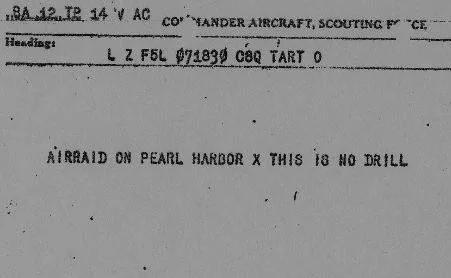Swiping at other forms of warfare is still not a positive argument for land power, what it does, and why it is important. To suggest land power as the pinnacle of military force discards joint complement, which empirical examination of warfare does not confirm. Ultimately, the contribution of land power to net strategic effect is just as subject to friction as every other blunt instrument of military might — to suggest otherwise is dangerous.
Air Power: A Personal Theory of Power—Annihilation, Attrition, and Temporal Paralysis
While there are few truly unique aspects of domain-specific forms of power, each form has advantages that make it exceptional from others. For air power, that is speed, reach, height, ubiquity, agility, and concentration, which combine to provide it exceptional flexibility and versatility. While air power has demonstrably contributed to strategic effect via the strategies of annihilation and attrition, it has also done so via temporal paralysis.
Joint Action: A Personal Theory of Power
Despite the historical success of joint action, many professional warriors and strategists continually debate which military function is most decisive in the termination of war. Even today, some question whether it is indeed worth the effort to work through the complications of combining competing strategies into effective joint action. My personal theory of joint action proposes an artful blend of both sequential and cumulative strategies to conduct unified operations that most effectively achieve our national objectives. Strategic effect is reduced when either cumulative or sequential strategies are parochially subordinated to the other, since there is no single, decisive function, service, or role in war.
Theory Properly Constructed: A Starting Point for our Personal Theories of Power
“Questions are our best friends for the invention and refinement of strong useful theory, and they are the lethal enemies of poor theory,” Colin Gray reminds us. Now its time to put that idea to the test, ever mindful of the Master’s aim for theory: "The primary purpose of any theory is to clarify concepts and ideas that have become, as it were, confused and entangled. Not until terms and concepts have been defined can one hope to make any progress in examining the question clearly and simply and expect the reader to share one’s views."
Why The Periphery Matters: Have you ever heard of Epidamnus or Potidea?
One does not intend here to attempt pithy conclusions as to who is playing Athens and who is playing Sparta in the modern geopolitical game in Eastern Europe. That is the concern of the Catch-22 addressed by Park, which I commend to you. But another question worth considering in this matter is, regardless of your geopolitical worldview, who is playing the parts of Corinth and Corcyra? And should we be more weary of the periphery?
A Modern Airpower Theorist: Seminar on the Evolution of Airpower Theory
Counter Terrorism, Continuing Advantage, and a Broader Theory of Victory
When the strategist considers counter terrorism, they must grapple with the larger focus of their aim, which is the act of building a bridge between two unlike elements: policy and military action. At the tactical level, counter terrorism is an action meant to culminate in an event that prevents, preempts, deters, defeats, or punishes a terrorist. However, at the strategic level, counter-terrorism is meant “as a plan for attaining continuing advantage.” In order for our counter terrorism strategies to remain effective, we must reject the strategic heuristic of specific end states, and instead seek continuing advantage towards a better state of peace.
Thinking Critically: On “We Were Caught Unprepared”
Need a New Idea, Try An Old One: Revisiting PAC-10 in the Air Sea Battle Concept
Drones and Complement
Whether you call them drones, remotely piloted vehicles, or unmanned vehicles, they’re all just tools of warfare. And forgive the banality of the point, but tools of warfare are used by humans who seek to maximize violence against their adversary, and that requires complement rather than replacement. Most importantly, we should also recall that in non-linear positive-sum games, as combat is exhibited as, the interaction of people and weaponry leads to a cumulative advantage if used asymmetrically. As such, the vast balance of history teaches us that we will continue to perceive technological/tactical cycles as something of a progression of coordination (synchronization), to cooperation (integration), and then ultimately, to a combination for strategic effect (convergence). We’ve only just begun to conceive of drones in the proper terms of complement, and it is past time to do so.
The Sublimity of Duty
To You, Our Fallen
On “No More Easy Wars”
In Foreign Policy’s National Security Blog, Colonel Scott Gerber (USA) recently attempted to make out the Air Sea Battle (ASB) Concept as foolishness. Personally, I am extremely concerned about building an operational concept around a policy shift known as the “Asia Pivot.” My greatest concern is that the United States has not sufficiently fleshed out the strategic underpinnings of translating the Asia Pivot policy into action, however setting that aside for now, I will revisit that in a follow-on post. What I find striking about Gerber’s offering here is how he insists on building a straw man of mythological proportions in order to knock over the ASB Concept.
Why RMAs Still Matter
Often confused for one another, Revolutions in Military Affairs (RMA) are much less influential than the societal-military earthquake-inducing Military Revolutions (MR). The confusion is not simply semantic, but rather crucial as RMAs have little to no influence beyond the tactical and operational levels of war. RMAs, as Knox and Murray tell us in “Dynamics of Military Revolution,” are no “substitute for strategy.”
Guest Post: On ‘Building Better Generals’
The Center for New American Security (CNAS) recently rolled out a provocative report titled,”Building Better Generals.” There are some valuable ideas to be considered here from LTG Barno, Dr. Bensahel, Ms. Sayler, and Ms. Kidder — especially on encouraging continued education for General and Flag Officers—and I recommend you take a look at it (see also, “’Building Better Generals’ Report Rollout Panel”)
















